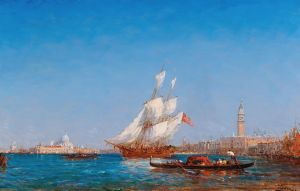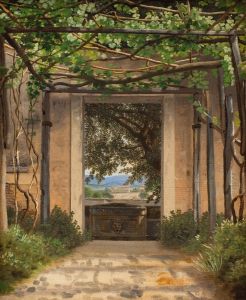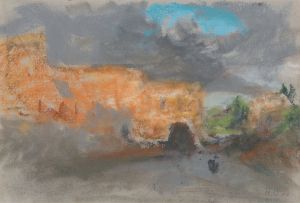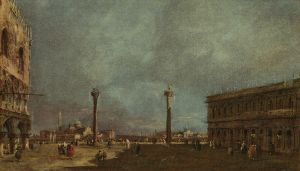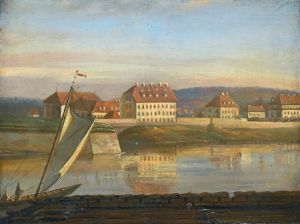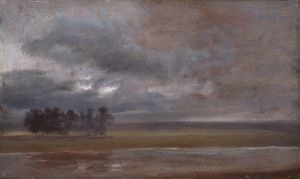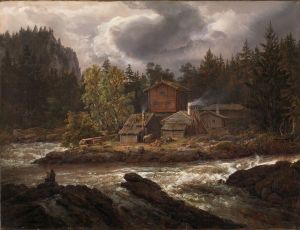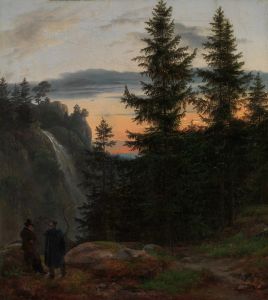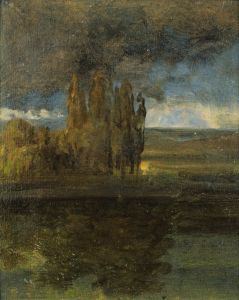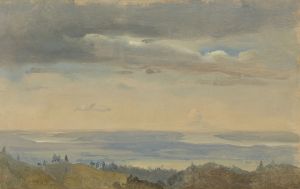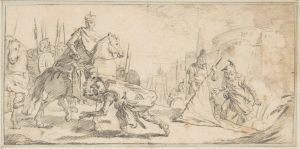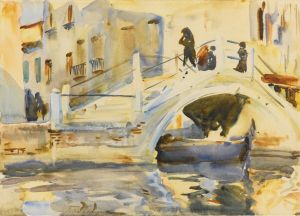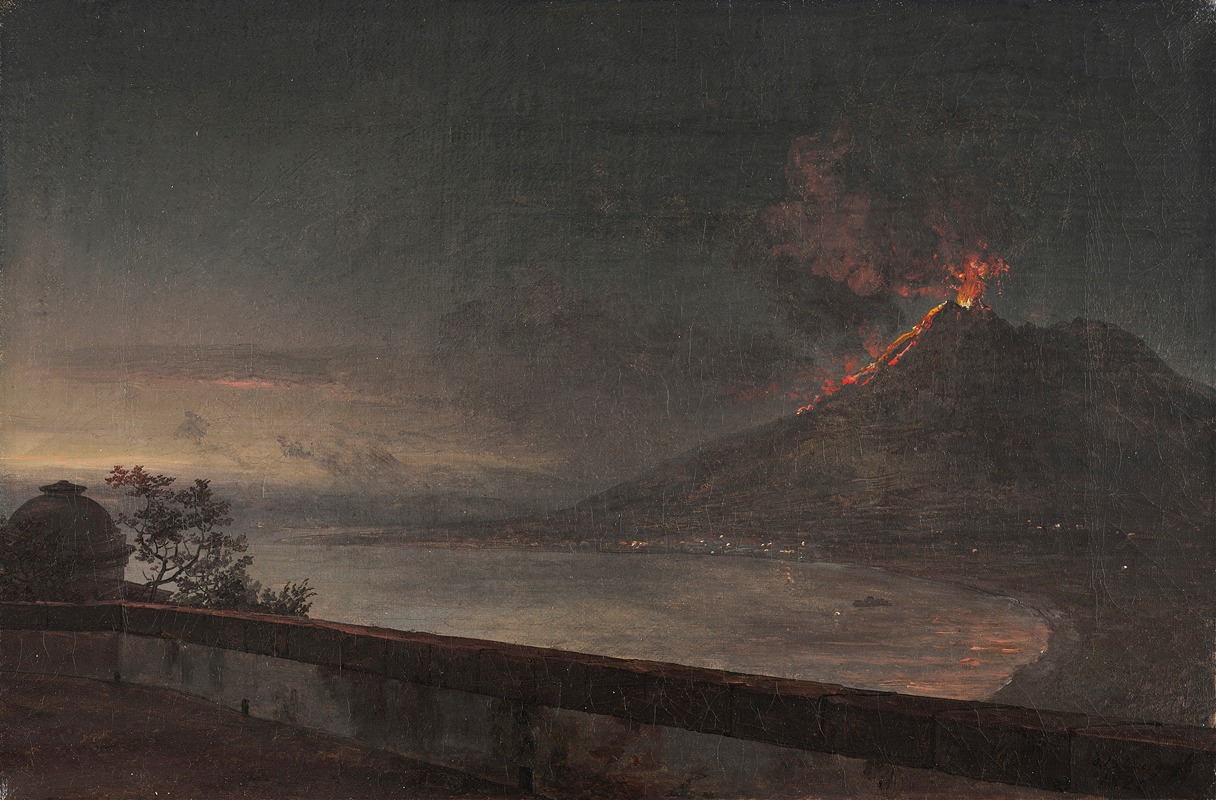
Utsikt mot Vesuvuis från Quisisana
A hand-painted replica of Johan Christian Dahl’s masterpiece Utsikt mot Vesuvuis från Quisisana, meticulously crafted by professional artists to capture the true essence of the original. Each piece is created with museum-quality canvas and rare mineral pigments, carefully painted by experienced artists with delicate brushstrokes and rich, layered colors to perfectly recreate the texture of the original artwork. Unlike machine-printed reproductions, this hand-painted version brings the painting to life, infused with the artist’s emotions and skill in every stroke. Whether for personal collection or home decoration, it instantly elevates the artistic atmosphere of any space.
Johan Christian Dahl's painting Utsikt mot Vesuvuis från Quisisana (translated as View of Vesuvius from Quisisana) is a notable work by the Norwegian Romantic landscape painter. Dahl, often regarded as the father of Norwegian landscape painting, was a key figure in the Romantic movement, known for his detailed and dramatic depictions of natural scenery. This particular painting reflects his fascination with the sublime and the grandeur of nature, themes that were central to his artistic philosophy.
The artwork was created during Dahl's travels in Italy, a country that deeply inspired him and many other Romantic artists of the 19th century. Dahl visited Italy between 1820 and 1821, and again in 1826, spending significant time in Naples and its surrounding areas. The Quisisana region, located near Castellammare di Stabia in southern Italy, offered a vantage point for observing Mount Vesuvius, one of the most iconic and active volcanoes in Europe. The painting captures the view of Vesuvius as seen from Quisisana, emphasizing the dramatic interplay of light, atmosphere, and the imposing presence of the volcano.
Dahl's work is characterized by meticulous attention to detail and a profound sense of realism, combined with an emotional and almost spiritual engagement with the landscape. In Utsikt mot Vesuvuis från Quisisana, he skillfully portrays the natural beauty of the Italian countryside, with the looming Vesuvius serving as both a geographical and symbolic focal point. The volcano, a subject of fascination and fear due to its history of eruptions, is depicted with a sense of calm yet latent power, reflecting Dahl's ability to balance tranquility and drama in his compositions.
The painting also demonstrates Dahl's mastery of light and atmosphere, as he captures the subtle variations in color and tone that define the landscape. His use of light creates a sense of depth and dimension, drawing the viewer into the scene and evoking a sense of awe and wonder. This approach aligns with the Romantic ideal of nature as a source of inspiration and a reflection of the sublime.
Today, Johan Christian Dahl is celebrated as one of Norway's most important artists, and his works, including Utsikt mot Vesuvuis från Quisisana, are held in high regard for their artistic and historical significance. This painting is an example of his ability to combine scientific observation with emotional resonance, making it a valuable contribution to the Romantic landscape tradition.





